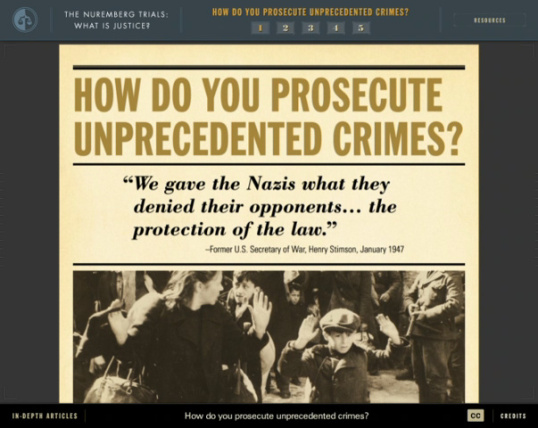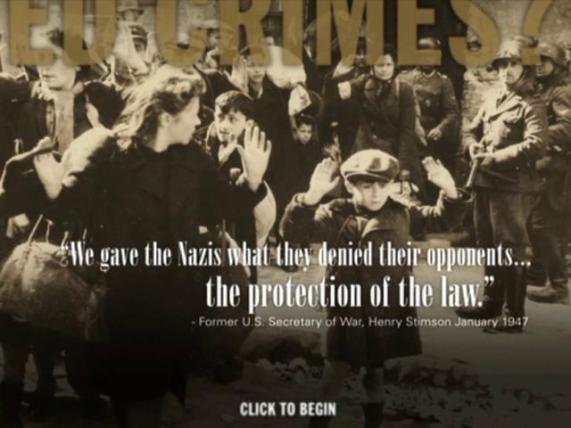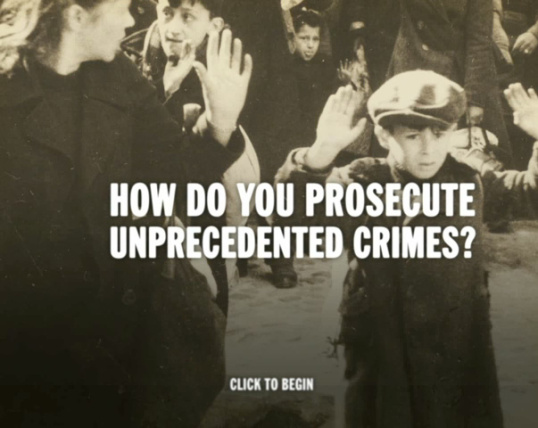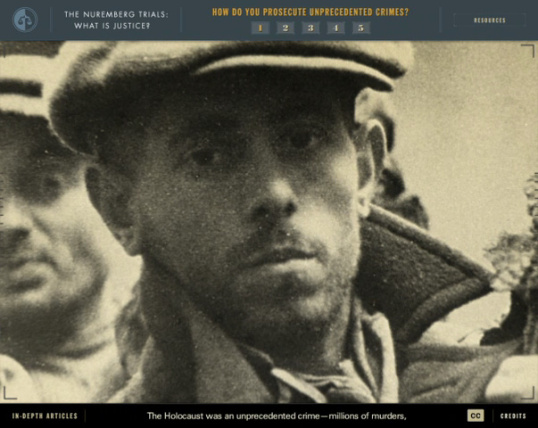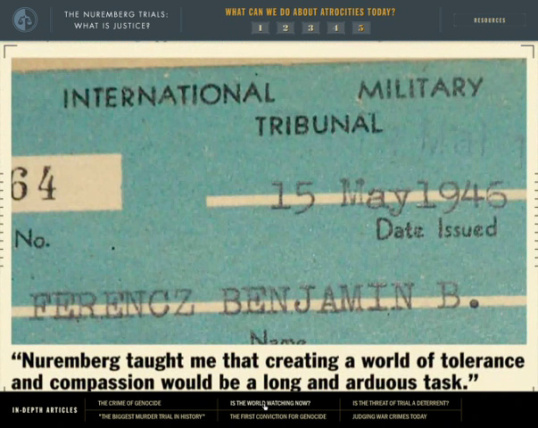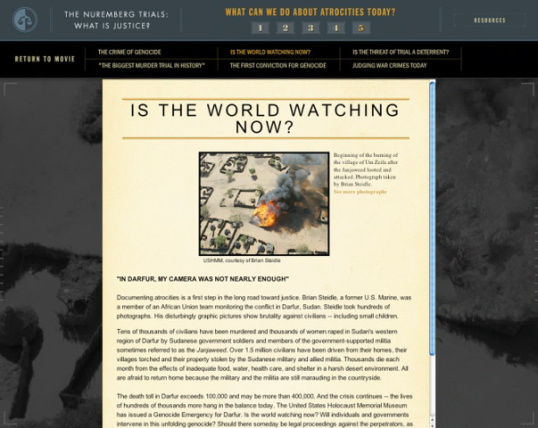Nuremberg Trials
Interactive research stations explore how justice was sought against the perpetrators of the Holocaust.
In the immediate aftermath of the Holocaust, the world was faced with a challenge—how to seek justice for an almost unimaginable scale of criminal behavior. The International Military Tribunal (IMT) held at Nuremberg, Germany, attempted to broach this immense challenge on a legal basis. Interactive stations in the Wexner Learning Center of the U.S. Holocaust Memorial Museum provide compelling opportunities for visitors to learn about the trials at a variety of levels. Five short documentaries that combine audio narration, video, and motion graphics answer questions including “How do you prosecute unprecedented crimes?,” “Who was held legally responsible for the Holocaust?,” “Is it ever too late to seek justice?,” and “How does the Holocaust shape our ethical obligations when faced with atrocities today?” Following each documentary visitors have the opportunity to dig deeper and access in-depth articles about each issue, or continue to the next documentary. Visitors can passively watch documentaries, conduct research, or do both. The visual and motion design of the presentation is evocative of the era with graphical treatments that conjure the experience of scanning and researching old newspapers through a microfilm machine.
